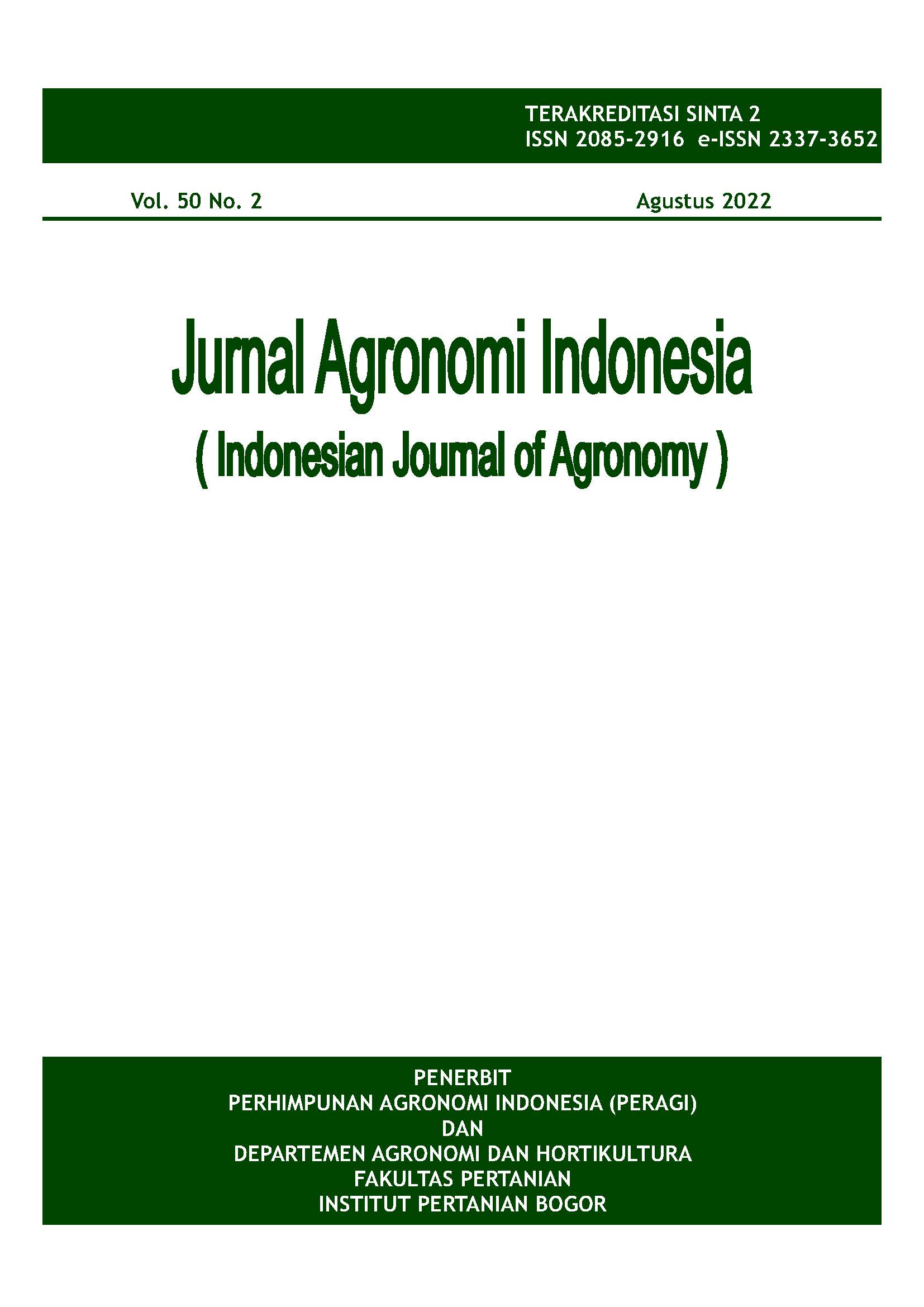The Increasing Tomato Plant Yield in Ultisol Soil with Various Types of Organic Fertilizer Enriched with Trichoderma sp.
Abstract
Applying organic fertilizer that has been decomposed with Trichoderma sp. on ultisol soil can improve soil’s physical, chemical, and biological quality, and therefore is expected to increase the growth and yield of tomato plants. The study aimed to determine the effect of the type of organic fertilizer enriched with Trichoderma sp. in increasing tomato yields on ultisol soils. The experiment was conducted in a greenhouse in Kuburaya Regency, West Kalimantan, from June to September 2021 using a factorial completely randomized design. The first factor was the provision of organic fertilizers, namely cow manure, chicken manure, and rice straw bokashi. The second factor was the provision of Trichoderma sp., namely T. hamantum isolates RRA3 and T. viridae isolates RRB7. The interaction of chicken manure and cow manure with the two species of Trichoderma sp. accelerated harvest age and increased the number of fruits and fruit weight per plant. Cow manure enriched with T. hamantum isolates RRA3 increased the shoot dry weight. Among organic fertilizers, cow manure accelerated harvest age and increased the shoot dry weight, fruit number, fruit weight per plant, and single fruit weight.
Keywords: microorganisms, organic matter, plant production, soil quality













